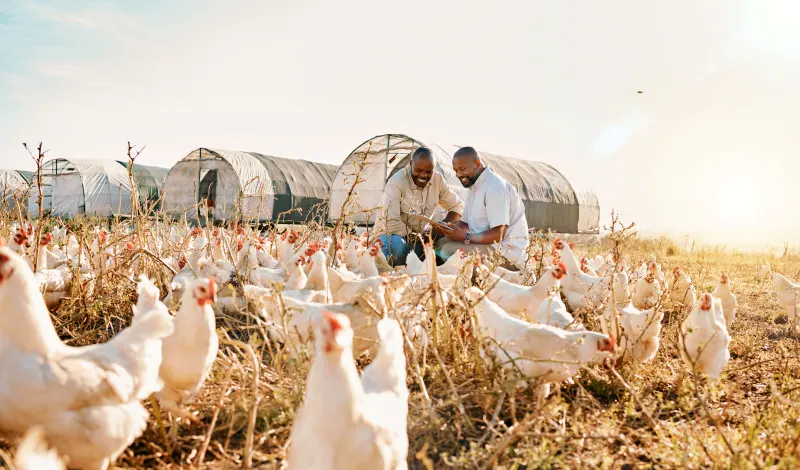Who says farming is suitable only for landmass?
For you, Gen Z and millennials looking for alternative income sources, rabbit farming or known as cuniculture could be the right solution.
Rabbits aren’t just cute; they also have promising business potential! From meat, fur, to pets, rabbits have many enthusiasts.
In this article, we will discuss how rabbit farming can become a profitable additional income.
Why Rabbits?
Rabbits are one of the easiest animals to care for, requiring minimal space, and they can reproduce quickly. Here’s why rabbit farming is perfect for those with limited land:
- Easy to Breed
Rabbits are known for their rapid reproduction! With a short reproductive cycle, you can start your farming venture with just a few rabbits.
In a relatively short time, your rabbit population can grow rapidly, providing opportunities to expand your business without needing a large initial investment. - Broad Market
Rabbit meat is increasingly favored among health-conscious food lovers seeking low-fat, nutritious protein alternatives.
Additionally, rabbits are also popular as pets due to their cute appearance and friendly nature. With two promising market segments, the potential for success in this business is substantial! - Affordable Costs
Starting a rabbit farming venture doesn’t require breaking the bank.
Feeding rabbits is quite simple; providing fresh grass, vegetables, or basic pellets can ensure they grow healthy and happy.
This makes rabbit farming an ideal choice for beginners wanting to enter the farming world with minimal capital.
How to Start Rabbit Farming: From Housing to Sales
For those curious about starting rabbit farming, here are practical steps to get you started:
- Prepare the Housing
Ensure the rabbit housing is well-designed. Choose a location with good ventilation to maintain air circulation and avoid humidity.
The housing should be protected from rain and extreme weather and have a clean floor to maintain hygiene. Aim for a spacious housing unit so the rabbits can move around freely. - Choose The Right Rabbit Breeds
Selecting the right rabbit breeds is crucial. Choose breeds according to your needs, whether for meat or as pets.
For example, if you want to raise meat rabbits, consider breeds like New Zealand or Flemish Giant.
For decorative rabbits, you might choose Angora or Netherland Dwarf, which are known for their cuteness. Ensure the selected breeds are healthy and sourced from reliable providers. - High Quality Feed
Feed is a key factor in rabbit growth. Provide healthy, fiber-rich feed like fresh grass, hay, and leafy greens (lettuce, kale).
Avoid giving them too many carbohydrates or fats. Also, make sure rabbits always have access to clean water. - Appropriate Health Care
Regularly check the health of your rabbits to prevent diseases. Vaccinations and deworming should be scheduled accordingly.
Most importantly, maintain the cleanliness of the housing and surrounding environment to prevent disease spread. - Establish a Breeding System
Once the rabbits are ready for breeding, ensure you understand their reproductive cycle. Female rabbits can start breeding at around 5-6 months old.
Be sure to select healthy mates to produce good offspring. After giving birth, female rabbits will care for their young, so provide a comfortable space for them. - Monitor Growth
Regularly monitor the growth of your rabbits. Keep track of each rabbit’s weight gain and health. This is essential to ensure they grow well and reach the ideal size for sale. - Marketing
Once the rabbits are ready for harvest, create a marketing plan. Reach out to potential buyers through social media, local markets, or partnerships with restaurants and health food stores seeking rabbit meat.
Rabbit Breeds That Suitable for Farming
There are several popular rabbit breeds for farming. You can choose based on your target market:
Meat Rabbit Breeds
Meat rabbits, such as New Zealand and Flemish Giant, are favorites among farmers due to their rapid growth and quality meat.
New Zealand rabbits reach 2-3 kg in 3-4 months, offering lean meat and high reproductive rates, capable of giving birth to 8-12 offspring per litter.
Flemish Giant rabbits also grow quickly and are disease-resistant, producing thick, delicious meat. The market potential for rabbit meat is significant, especially among consumers seeking healthy options.
Pet Rabbits
On the other hand, pet rabbits like Angora and Lop are popular as pets. Angora rabbits are known for their thick and soft fur, often used in textiles, but they require intensive care.
Lop rabbits, with their droopy ears and friendly demeanor, are appealing. Breeds like Holland Lop are suitable for indoor pets due to their small size.
The pet rabbit market is growing rapidly, especially in large cities with high demand from pet-loving communities.
Market Potential for Rabbit Farming
Who would have thought rabbit farming could be a golden opportunity? With increasing demand for rabbit meat and healthy eating trends, this business is becoming more attractive! In addition to meat, rabbits are also adorable pets. Here are the complete reasons:
- Rabbit Meat: Rabbit meat is increasingly sought after for its low-fat and high-protein content, perfect for those following a healthy diet.
- Pets: For animal lovers, decorative rabbits like Angora and Lop are very popular, especially among urban youth.
- Rabbit Fur: Angora rabbits have soft fur that is highly sought after by the textile industry for fashion materials.
Advantages and Challenges of Rabbit Farming
If you decide to start rabbit farming, here are the advantages and challenges you might face:
Advantages:
- Quick Harvest: Rabbits can be harvested in 3-4 months, allowing you to quickly recoup your investment.
- Affordable Capital: The costs of rabbit care are relatively low, making it suitable for those just starting out.
- Broad Market: There are many segments you can target, from meat, pets, to fur.
Challenges:
- Health Care: Rabbits are susceptible to diseases like scabies, so maintaining cleanliness in their housing is essential.
- Marketing: Finding the right market, especially if you have a specific niche target, requires a solid strategy.
Conclusion
For those looking for additional income, rabbit farming can be an enjoyable and profitable choice.
With manageable care requirements and significant market potential, rabbit farming is one of the alternative ventures you can start with a small investment.
So, are you ready to start rabbit farming?




